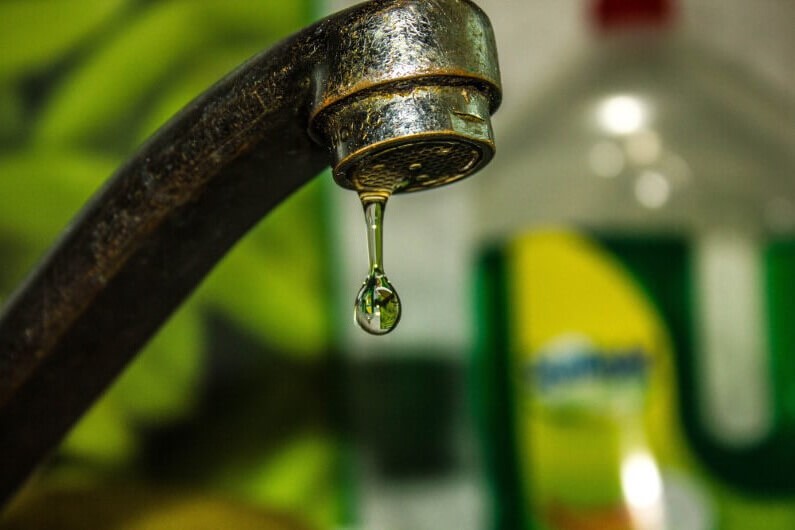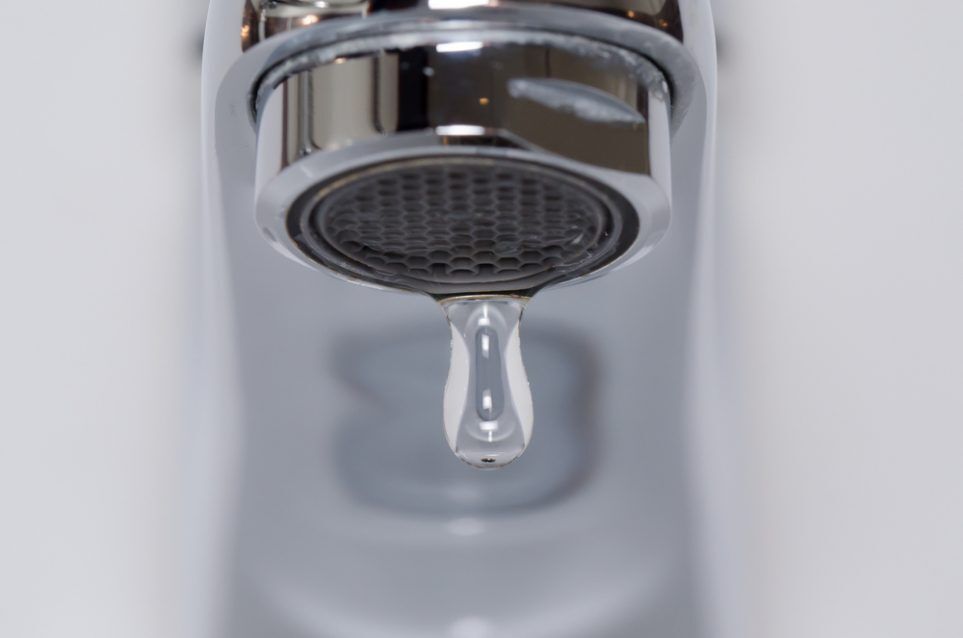Our Benefits of Repairing a Broken Faucet
Our Benefits of Repairing a Broken Faucet
Blog Article
We have found this post about Leaky Faucets: Why They Happen & What to Do About Them directly below on the internet and thought it made sense to write about it with you on my blog.

Trickling faucets could feel like a minor hassle, yet their impact goes beyond simply the annoyance of the audio. From drainage to incurring unnecessary financial prices and wellness threats, overlooking a trickling tap can bring about numerous effects. In this article, we'll look into why it's critical to resolve this common home concern quickly and successfully.
Wastefulness of Water
Environmental Influence
Dripping taps contribute dramatically to water wastefulness. According to the Environmental Protection Agency (EPA), a single tap trickling at one drip per secondly can waste greater than 3,000 gallons of water per year. This not only strains water resources but also influences ecosystems and wild animals depending on them.
Financial Prices
Enhanced Water Bills
Beyond the environmental impact, dripping faucets can pump up water expenses substantially. The accumulated wastage gradually translates right into higher energy expenses, which could have been stayed clear of with prompt repair services.
Prospective Building Damages
Furthermore, prolonged dripping can result in damage to components and surfaces bordering the faucet. Water accumulation can cause staining, corrosion, and even structural problems if left unattended, causing additional repair service expenses.
Health and wellness Issues
Mold and Mold Development
The consistent existence of moisture from a dripping tap creates a perfect setting for mold and mildew and mold growth. These fungis not just jeopardize interior air high quality however additionally pose wellness threats, specifically for people with respiratory problems or allergic reactions.
Waterborne Diseases
Stagnant water in dripping faucets can become a breeding ground for microorganisms and other virus, increasing the risk of waterborne conditions. Contaminants such as Legionella germs prosper in stationary water, possibly bring about severe illnesses when consumed or inhaled.
Do it yourself vs. Specialist Fixing
Advantages and disadvantages of DIY Repair
While some might try to fix a trickling tap themselves, DIY repairs include their very own collection of obstacles. Without correct expertise and devices, DIY attempts can intensify the problem or cause incomplete repair work, lengthening the trouble.
Advantages of Working With a Specialist Plumber
Hiring an expert plumber guarantees that the underlying source of the leaking tap is addressed effectively. Plumbing technicians have the proficiency and tools to detect and repair faucet concerns effectively, saving time and decreasing the risk of further damage.
Step-by-Step Guide to Fixing a Dripping Tap
Tools Required
Before attempting to deal with a dripping tap, collect the required devices, consisting of an adjustable wrench, screwdrivers, substitute components (such as washing machines or cartridges), and plumber's tape.
Common Faucet Issues and Their Solutions
Recognize the sort of faucet and the certain concern creating the drip. Usual troubles include worn-out washers, corroded valve seats, or defective O-rings. Describe manufacturer guidelines or on-line tutorials for step-by-step advice on repairs.
Preventive Measures
Regular Maintenance Tips
To avoid leaking taps, carry out regular maintenance such as cleaning aerators, examining for leakages, and replacing damaged parts immediately. Furthermore, consider installing water-saving tools or updating to much more reliable fixtures.
Relevance of Prompt Repairs
Addressing leaking faucets as quickly as they're observed avoids more water wastefulness and possible damages, ultimately saving both water and money over time.
Influence On Building Value
Assumption of Well-Maintained Building
Keeping a property in good condition, consisting of resolving upkeep problems like leaking faucets, boosts its regarded value and desirability amongst possible buyers or tenants.
Impact on Resale Value
Features with well-kept plumbing components, including faucets, command greater resale worths in the real estate market. Dealing with dripping faucets can contribute to a favorable perception throughout residential or commercial property inspections and arrangements.
Environmental Responsibility
Private Contribution to Conservation
Taking obligation for dealing with dripping taps lines up with more comprehensive initiatives towards water conservation and environmental sustainability. Every individual's activities collectively make a significant impact on preserving priceless sources.
Lasting Living Practices
By focusing on prompt fixings and embracing water-saving practices, people contribute to sustainable living practices that profit both present and future generations.
Final thought
Resolving a leaking faucet exceeds mere convenience; it's a crucial step toward preserving water, decreasing economic prices, and safeguarding health and home. Whether via DIY repair services or expert support, taking action to fix leaking faucets is a little yet impactful way to advertise responsible stewardship of resources and add to a much healthier, extra sustainable future.
Most Common Reasons for a Leaky Faucet and How to Stop the Drip
Whether it’s your kitchen faucet leaking or a bathroom faucet leaking, one leaky faucet can waste anywhere from three to 30 gallons of water every single day. If the constant drip-drip-drip doesn’t get your attention, your water bill will. The good news is that, by following a few simple steps, chances are pretty good you can fix the problem yourself.
Why is it dripping?
Before you start taking things apart, let’s break down some of the most common causes of a leaky faucet.
Bad O-ring.
A cartridge is a valve that controls the flow of water into the faucet spout. On cartridge faucets there’s an O-ring—the little disc attached to the stem screw that holds the faucet handle in place. If it’s loose or worn-out, it can cause your sink handle to leak. Of course, the cartridge itself could be worn out. If that’s the case, make sure you replace it with the exact same kind.
Corroded valve seat.
The valve seat connects the faucet and the spout. If the leak seems to be coming from the spout, it might be because a buildup of water sediment has corroded the valve seat.
Worn-out washers or seals.
A leaky spout could be caused by a bad washer that rests against the valve seat. It’s just a matter of time before friction takes its toll. It could also be the wrong size washer or one that’s been installed incorrectly. Water sediments can also corrode inlet and outlet seals.
Water pressure.
If the faucet only drips now and then, or when you turn the handles a certain way, you should probably check your home’s water pressure.
Loose or broken parts.
The adjusting ring and packing nuts in the stream screw can become loose over time, causing your sink handle to leak. Try tightening or replacing the packing nut. If the leak is coming from the pipes underneath the sink, you probably have a broken pipe or fitting. If that’s the case, you should definitely call a plumber.
Know your faucet.
Faucets come in a variety of types. Each one has its own assembly—and its own possible causes of leaks. Learning about the four most common kinds of faucets will help you know how to take them apart and make any repairs.
How to stop a leaky faucet
Fixing that leaky faucet doesn’t have to take a lot of time, money, or expertise. It’s usually a simple matter of replacing a worn-out washer or gasket, a loose O ring, or another part. Chances are really good you can do this yourself if you follow these simple steps.
Shut off the water.
Before you tackle the faucet, cut off the water supply to the sink. There should be one valve for hot and one for cold. Hand-turn them clockwise with your hands till they close. If there are no valves under the sink, head to the basement and shut off the main water supply to the house. Then turn on the faucet until it empties out the water that’s still in the line and you’re ready to start. It’s a good idea to cover the sink drain with a plug or a rag so you don’t lose any small pieces and parts while you’re working.

Do you like reading up on Why Are My Faucets Dripping (And Can I Fix It Myself)?? Try leaving feedback further down. We'd be glad to hear your reactions about this write-up. We are looking forward that you visit us again later on. Please take a moment to promote this blog post if you enjoyed it. I truly appreciate reading our article about 4 Common Reasons for a Leaky Faucet.
Report this page